Unveiling the Impact of Autism on Various Memory Types
Autism spectrum disorder (ASD) encompasses a range of neural and cognitive differences that significantly influence how individuals process, store, and retrieve memories. While some memory capabilities remain intact or even enhanced, others are notably impaired, affecting social interactions, educational progress, and daily functioning. This article explores the intricate ways autism affects different memory systems, underlying neural mechanisms, and effective strategies to support memory development.
Differential Impact of Autism on Memory Types and Neural Mechanisms
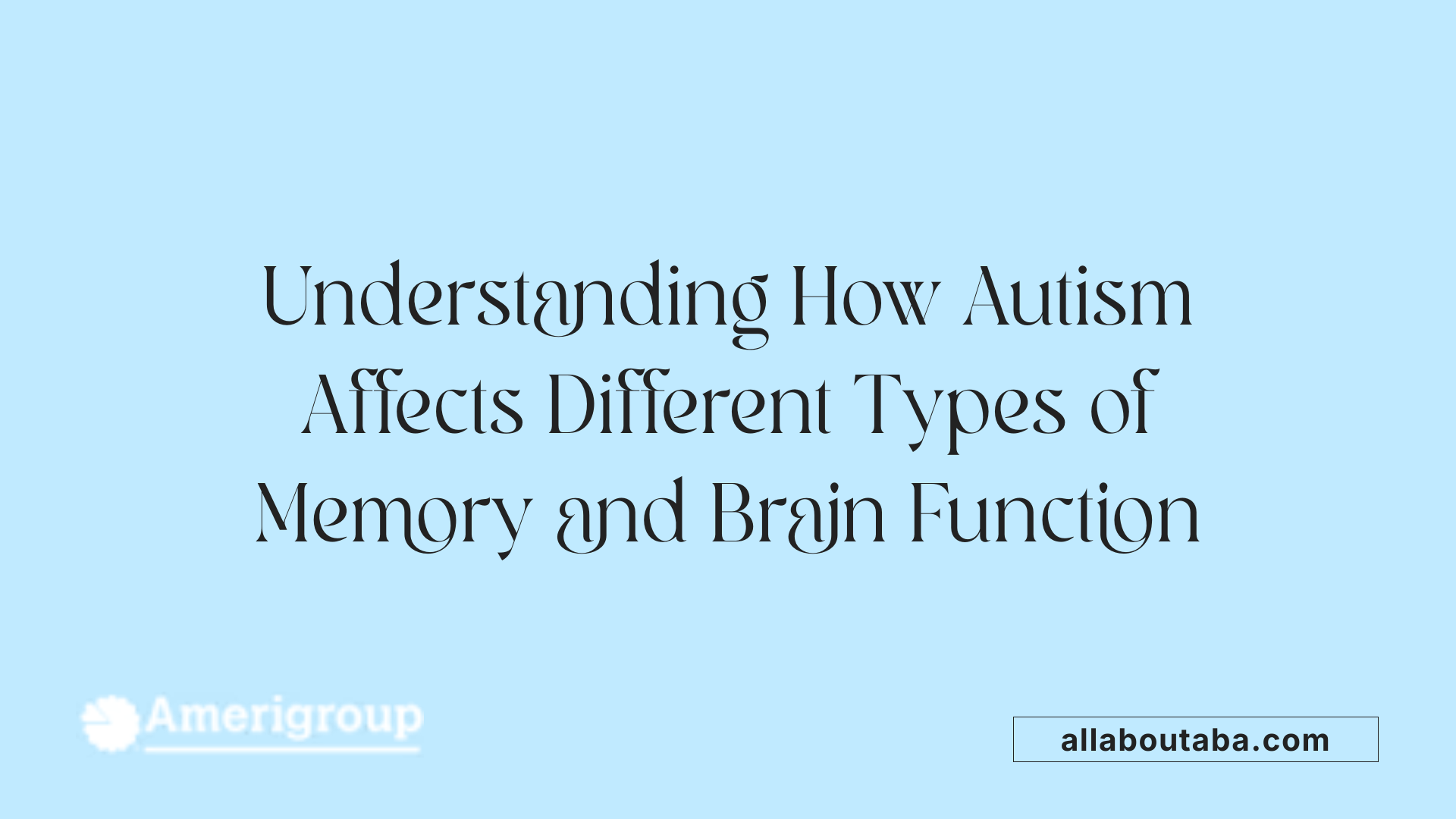
How does autism affect different types of memory, such as working memory and short-term memory?
Children with autism exhibit distinct patterns of memory performance, often facing challenges in working memory and certain aspects of short-term memory. Working memory, which involves holding and manipulating information over brief periods, tends to be weaker in individuals with autism, particularly in visuospatial tasks. This affects their ability to follow multi-step instructions, coordinate actions, or hold complex visual and verbal information in mind.
Short-term memory, sometimes called immediate memory, can also be problematic, especially when tasks require grasping complex or non-routine information without explicit cues. However, many autistic individuals show strengths in rote memory and visual recognition, which can sometimes compensate for deficits in more complex memory tasks.
On a neurological level, these memory impairments are linked to specific brain structures. The prefrontal cortex, especially lateral parts responsible for executive functions and working memory, tends to show hypoactivation during memory tasks. Functional imaging studies highlight reduced connectivity and activity in these regions, impairing the brain’s ability to effectively encode and retrieve information.
Moreover, evidence suggests that the hippocampus, a critical area for consolidating episodic and associative memories, may also function atypically in autism. Variations in hippocampal volume and connectivity could contribute to difficulties in forming contextual associations, impacting both social and non-social memory.
It is also noteworthy that the overall organization of memory in autistic individuals differs from typical development. Instead of flexible, generalized memory strategies, many rely on repetitive rehearsal or explicit cues, which aligns with brain connectivity patterns involving over-connection in certain circuits.
These neural differences underline why individuals with autism might excel in specific, detail-oriented memory tasks but struggle with more integrative or flexible memory processes. Understanding these distinctions is crucial for tailoring interventions and educational strategies that support diverse memory profiles in autism.
Memory Strengths and Specific Challenges in Autism
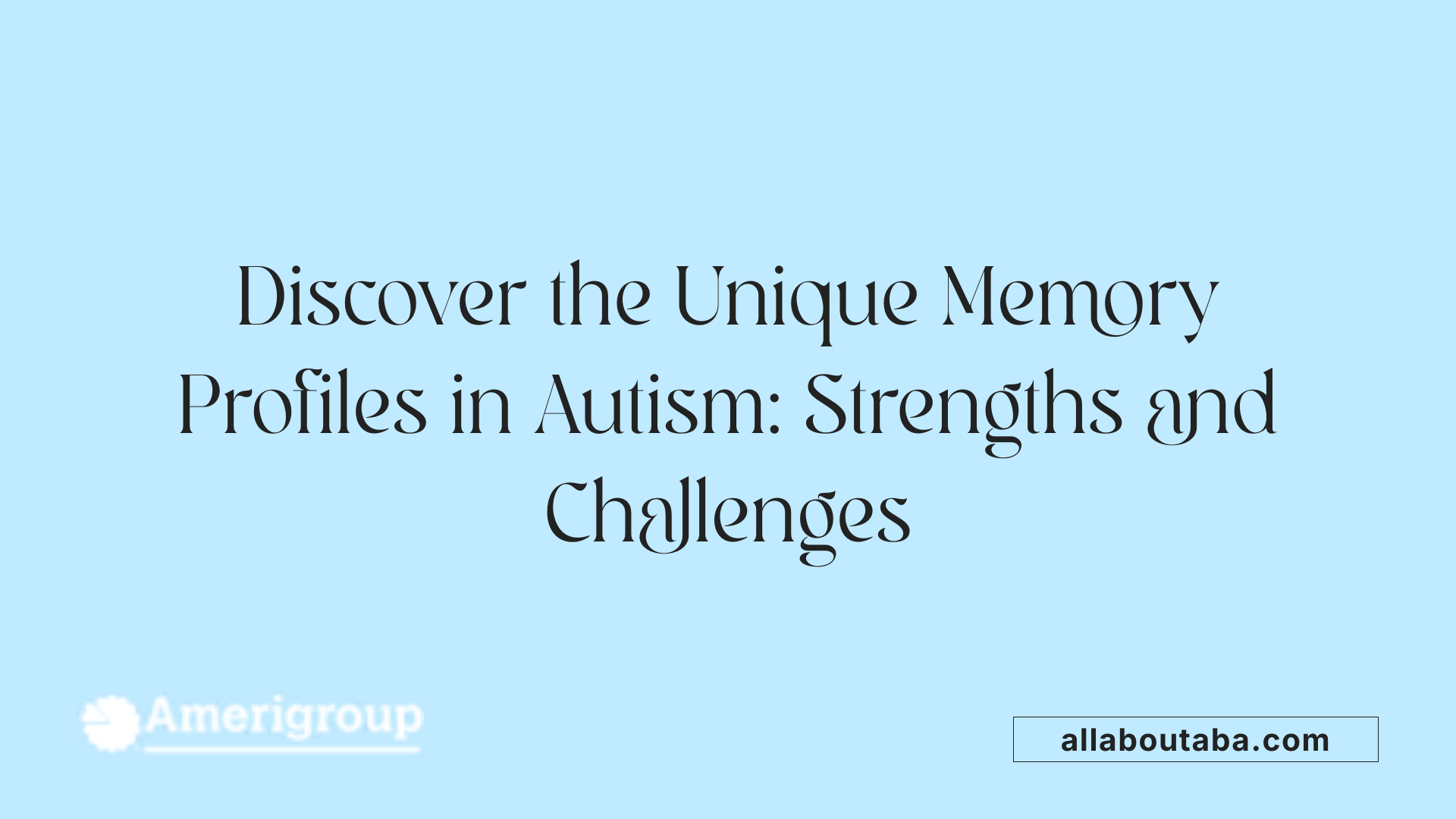
What are common memory strengths and deficits associated with autism?
Autistic individuals often show remarkable strengths in certain types of memory, particularly visual and rote memory. They tend to excel at remembering patterns, sequences, and detailed visual information, which can help them recognize faces, recall spatial layouts, and remember specific facts or routines related to their interests.
In contrast, they frequently struggle with memory tasks involving social-emotional content and autobiographical memory. This includes difficulties in recalling personal experiences with rich contextual and emotional details, mainly due to challenges in encoding and retrieving complex episodic information.
Working memory, especially verbal and spatial working memory, is another area commonly affected in autism. These impairments make it hard to hold and manipulate multiple pieces of information at once, impacting language processing, problem-solving, and following multi-step instructions.
Memory issues are often more noticeable with complex or high-demand stimuli. Simpler or routine information, which does not require extensive organization or emotional processing, is usually retained more effectively.
Underlying neural differences contribute to these memory profiles. Atypical connectivity in key brain regions like the hippocampus, which is essential for encoding and retrieving non-social memories, and the frontal cortex, involved in executive functions and working memory, influences how information is processed and stored in autism.
This combination of strengths and challenges reflects a distinctive memory organization in autism, supporting targeted strategies for education and therapy. For example, leveraging visual memory skills can enhance learning, while supporting autobiographical memory might improve social understanding.
| Memory Type | Performance in Autism | Common Features | Neural Basis |
|---|---|---|---|
| Visual & Rote Memory | Superior | Excellent at recognizing patterns and details | Increased local connectivity in sensory areas |
| Autobiographical & Emotional Memory | Impaired | Difficulties recalling personal, emotionally rich events | Atypical hippocampal and prefrontal connectivity |
| Working Memory | Often reduced | Trouble manipulating complex information, especially verbal and spatial | Dysfunction in frontal cortex circuits |
| Recognition & Associative Learning | Often preserved | Good at recognizing familiar stimuli, strong in rote learning | Intact recognition pathways |
Understanding these memory profiles aids in developing interventions that capitalize on strengths while addressing weaknesses. Educators can use visual supports to reinforce learning, and therapists can focus on improving autobiographical recall to foster social development.
Scientific Foundations of Memory Function Studies in Autism
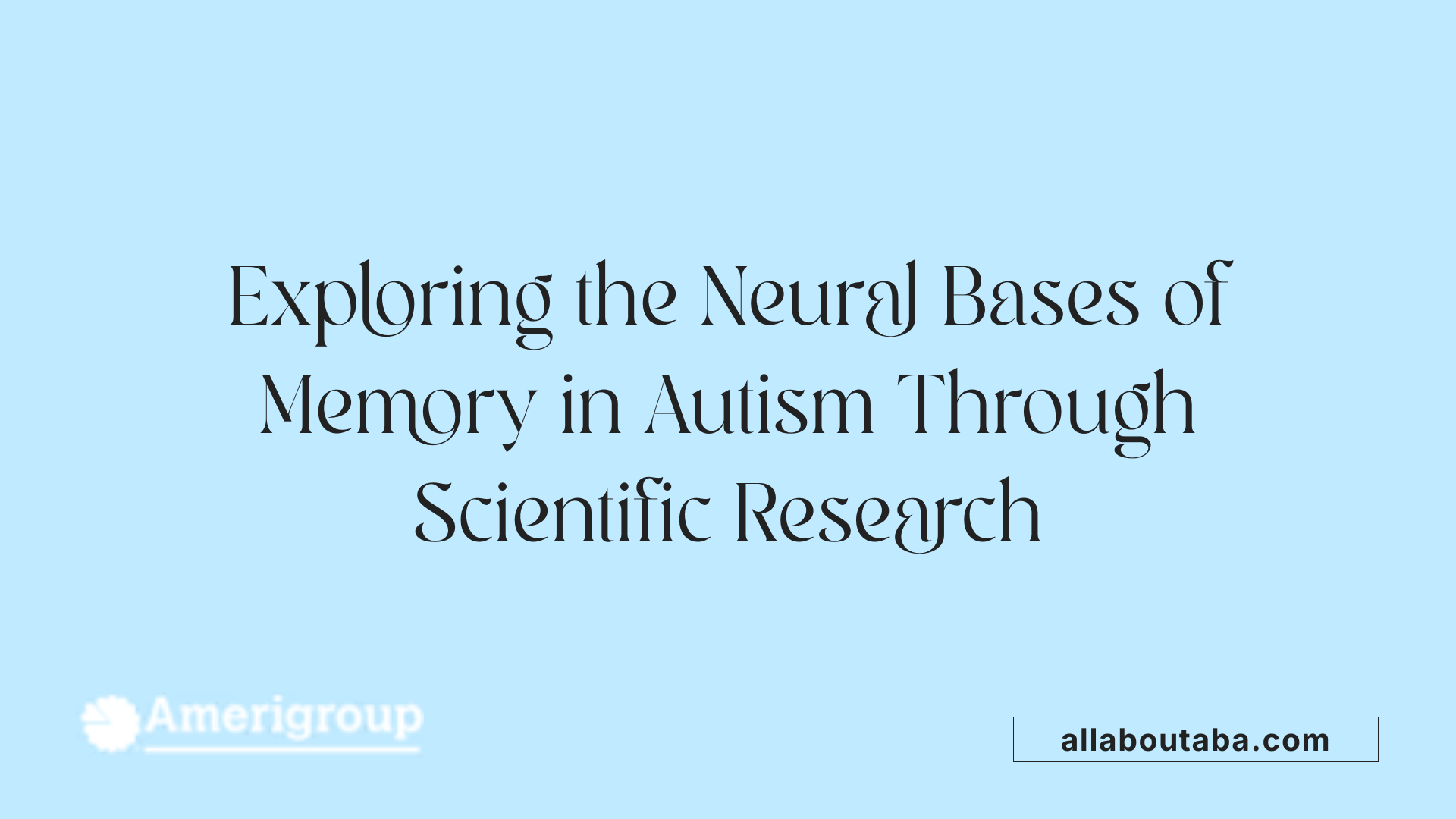
Are there scientific studies exploring memory functions in individuals with autism?
Yes, a considerable number of scientific studies have examined how autism affects various memory processes. These research efforts reveal that people with autism often face challenges with episodic memory—the ability to recall specific personal experiences and contextual details. For example, they may struggle to retrieve autobiographical memories when questions are unstructured or unsupported, although structured prompts can substantially improve their recall abilities.
Research extends beyond autobiographical memory to include related cognitive functions like working memory and executive functioning. These studies have shown that children and adults with autism frequently exhibit deficits in tasks requiring manipulation of information, such as planning or cognitive flexibility. For instance, children with high-functioning autism tend to perform worse on verbal and spatial working memory tasks, particularly as the difficulty or load increases.
Neuroimaging techniques such as functional magnetic resonance imaging (fMRI) and functional near-infrared spectroscopy (fNIRS) have played a crucial role in understanding the neural basis of these memory differences. Specific brain regions linked to memory processing—like the hippocampus, posterior cingulate cortex, and prefrontal cortex—show altered activity and connectivity patterns in autistic individuals.
Findings from these imaging studies consistently indicate that connections within brain networks are often over-connected or inefficient, which may hinder effective memory retrieval and encoding. For example, over-connected circuits involving the hippocampus are associated with difficulties in non-social memory retention, while altered connectivity in the prefrontal cortex correlates with working memory performance.
Overall, these studies highlight that memory impairments in autism are rooted in distinctive neural mechanisms. While some memory types, such as rote or visual memory, can be relatively preserved or even enhanced, others like relational and complex visual memories tend to be weaker. This comprehensive understanding of memory function in autism guides the development of tailored cognitive and behavioral interventions, aiming to leverage strengths and address specific weaknesses.
| Aspect of Memory | Findings | Brain Regions Involved | Neural Connectivity Issues |
|---|---|---|---|
| Episodic Memory | Reduced specificity; improved with structure | Hippocampus, prefrontal cortex | Over-connected circuits |
| Working Memory | Deficits increase with load; slower reaction times | Prefrontal cortex, dorsolateral PFC | Disrupted connectivity, especially in right hemisphere |
| Visual Memory | Generally preserved; error patterns observed | Visual cortices, occipital lobes | Abnormal organization of neural pathways |
This array of research underscores that memory difficulties in autism are complex, involving multiple neural pathways. They are not solely due to intellectual differences but also stem from distinctive brain connectivity and network efficiency issues. As such, understanding these neural foundations helps in crafting more effective educational and therapeutic strategies tailored to individual profiles.
Implications of Memory Processing Differences for Social and Academic Functioning
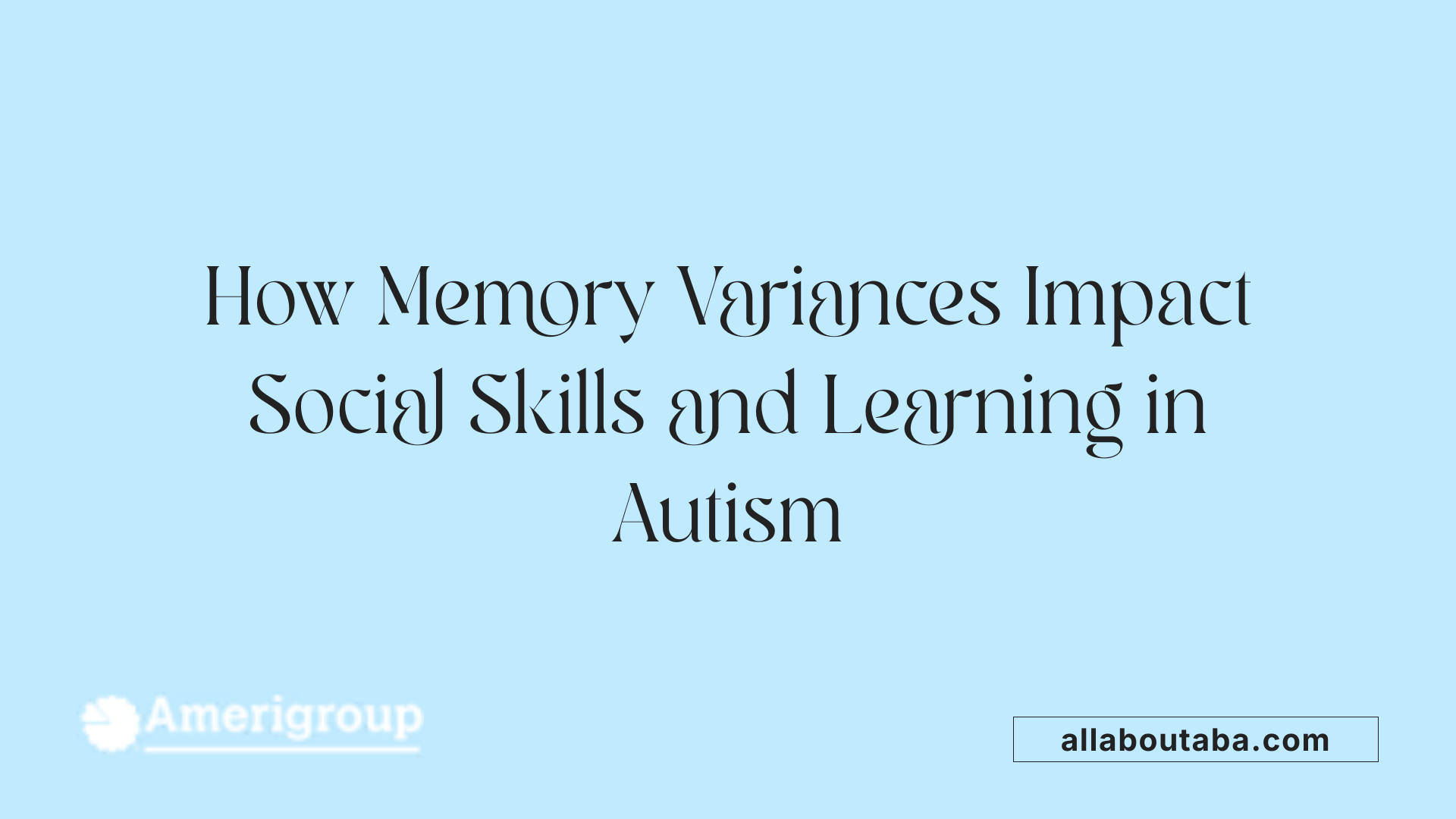
How do differences in memory processing affect individuals on the autism spectrum?
Memory processing in autistic individuals varies significantly from neurotypical patterns, influencing many aspects of daily life. These differences are rooted in unique neural circuitry, with over-connected brain regions such as the hippocampus and posterior cingulate cortex—both vital for memory formation and social cognition.
Children and adults with autism often struggle with working memory, especially when handling complex or spatial information. This difficulty can hinder their ability to adapt to social situations, follow routines, and manage daily tasks effectively. For example, challenges in executive functioning and spatial working memory may result in trouble with planning, multitasking, or recalling recent events, contributing to repetitive behaviors and social misunderstandings.
Moreover, memory impairments extend to academic settings. Difficulties in recalling verbal or visual information without explicit cues can impede learning. Tasks that require organizing and integrating large amounts of information become especially problematic without tailored supports, affecting school performance and long-term educational outcomes.
These neural differences, including abnormal connectivity patterns and structural variations in key brain areas, establish a biological basis for these cognitive and social challenges. For instance, over-connected circuits may lead to information overload or slower processing, making it harder to filter relevant social cues or instructions.
Recognizing how these memory processing differences impact daily functioning highlights the need for specialized interventions. Techniques such as using visual supports, structured prompts, and explicit teaching strategies can help compensate for memory weaknesses, improving engagement, comprehension, and social interactions.
In sum, understanding the implications of memory organization and neural circuitry in autism underscores the importance of personalized approaches. Supporting memory function can significantly enhance social skills, academic success, and overall quality of life for individuals on the autism spectrum.
Strategies to Enhance Memory in Autism Spectrum Disorder
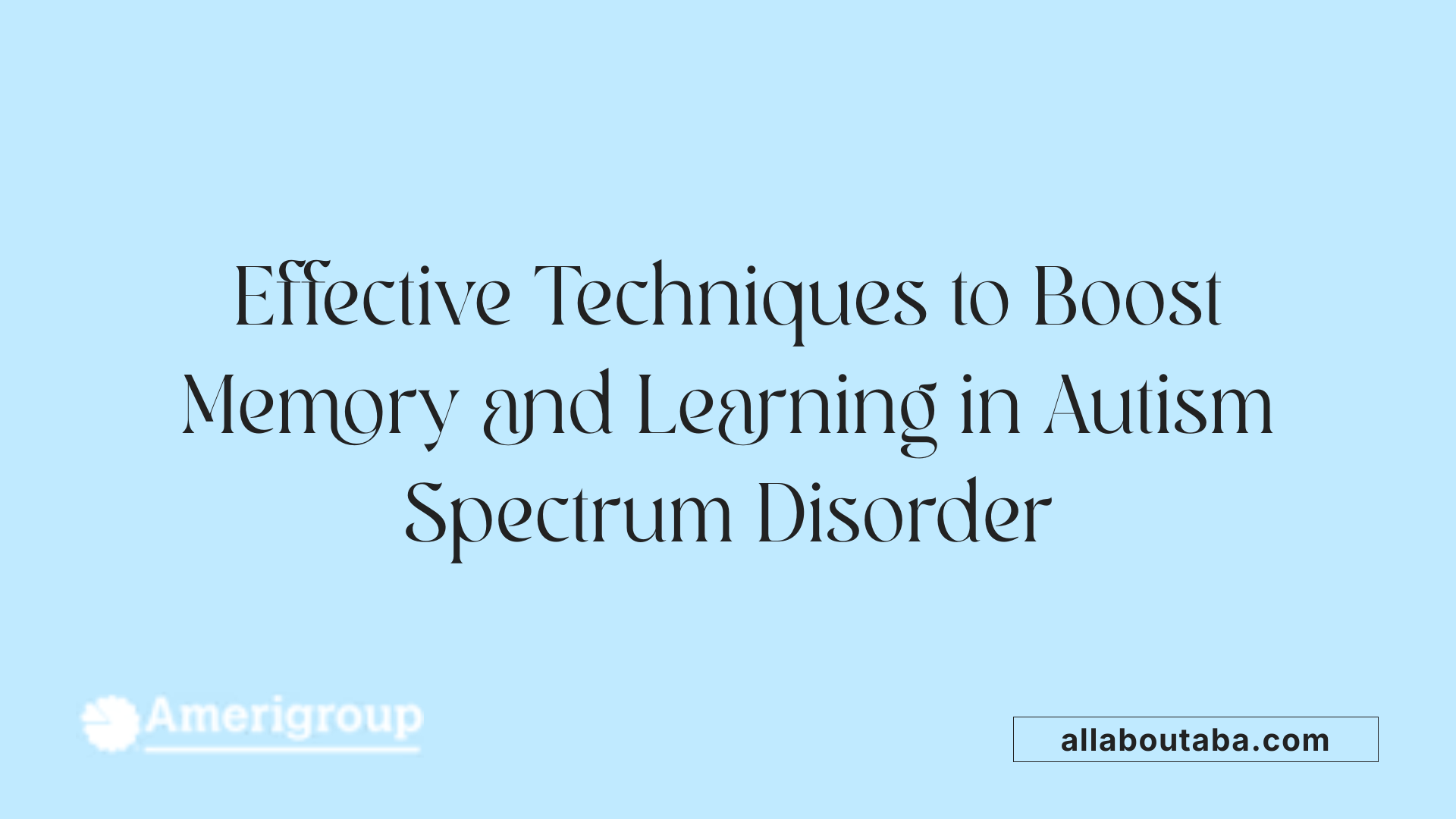
How can memory be improved in individuals with autism?
Enhancing memory in individuals with autism involves a combination of tailored strategies that capitalize on their unique strengths and address specific difficulties. Visual supports and cues are particularly effective, as many autistic individuals have a heightened visual memory. Using picture schedules, visual reminders, and diagrams can assist in better encoding and retrieving procedural and visual information.
Repetition, routines, and structured environments also play a vital role. Consistent daily routines and repetitive activities help reinforce memory, making it easier to consolidate information over time. These strategies support the brain’s ability to form stronger neural connections, especially in areas related to memory and executive functioning.
In addition, engaging in specialized memory training programs such as HABIT or practicing techniques like Nei Gong can promote neural plasticity and improve cognitive skills. These programs often include exercises that challenge working memory and executive functions, encouraging growth in neural pathways.
Incorporating sensory inputs and visual aids further enhances learning and retention. Sensory-based activities can make abstract information more concrete, aiding encoding and recall. For example, using tactile objects or integrating music and movement can stimulate multiple neural pathways, supporting overall cognitive development.
Creating a supportive, predictable environment and using a variety of strategies, including visual supports and repetitive routines, helps individuals with autism strengthen their memory over time. Patience and personalized approaches are crucial, as each child or adult may respond differently to these methods.
Ongoing support from educators, therapists, and family members ensures that these strategies are effectively implemented and adapted to fit changing needs. With consistent effort and tailored interventions, memory performance in autism can be significantly improved, supporting better learning, social interactions, and daily functioning.
Harnessing Neuroscience for Better Memory Support
Understanding the complexities of how autism influences various memory systems enables researchers, clinicians, and educators to develop more targeted intervention strategies. Recognizing both challenges and strengths allows for tailored approaches that support learning, social development, and daily functioning. By integrating insights from neuroscience, such as neural connectivity patterns and brain structure differences, interventions can be more precise. Equally, leveraging the inherent strengths in visual and rote memory can foster confidence and independence in individuals on the spectrum. Continued research and personalized support promise a future where memory difficulties are not barriers but avenues for growth and empowerment.
References
- Children with autism have broad memory difficulties, Stanford ...
- Study detects significant memory problems in autism
- Supporting autistic adults' episodic memory recall in interviews
- Children with autism found to have specific memory problems that ...
- Autism and Memory | Psychology Today
- Memory Functioning in Children and Adolescents With Autism - PMC
- Do Autistic People Have Good Memory? All You Need to Know
- Intact context memory performance in adults with autism spectrum ...
- The Role of Short-Term Memory in Autism
- Working memory and autism: A review of literature - ScienceDirect







